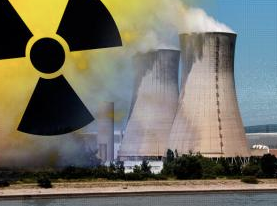Courtesy of ZeroHedge. View original post here.
 Submitted by Tyler Durden.
Submitted by Tyler Durden.
As a reminder, the biggest catastrophe that resulted from last year's Tohoku earthquake in Japan was not the earthquake itself, nor the infrastructure destruction from the susbequent tsunami, but the impact of the soaring water wall on the nuclear power plants in the coastline, namely Fukushima, and its aftermath, by now known all too well to all. So tonight too, all along the east coast, the biggest threat is not the wind, nor the rain, but the impact of the storm surge on the tens of nuclear power plants located in the vicinity of the rapidly rising tide. Such as Oyster Creek in New Jersey which just went on alert due to the surging water level.
The nation's oldest nuclear power plant is on alert after waters from a colossal storm reached high levels.
Oyster Creek in Lacey Township, N.J., was already offline for regular maintenance before Sandy, a superstorm downgraded Monday night from a hurricane, slammed the East Coast.
The Nuclear Regulatory Commission says an "unusual event" was declared around 7 p.m. when water reached a high level. The situation was upgraded less than two hours later to an "alert," the second-lowest in a four-tiered warning system.
Federal officials say all nuclear plants are still in safe condition. They say water levels near Oyster Creek, which is along the Atlantic Ocean, will likely recede within a few hours.
Oyster Creek went online in 1969 and provides 9 percent of New Jersey's electricity.
And elsewhere, we just saw the following also very disturbing headline from US Emergency Services:
PA | HYNDMAN |**EVACUATION**| – | VOLUNTARY EVAC DUE TO NUCLEAR WARNING IN BEDFORD COUNTY. UEA325 | UEA451 |
We will keep track of any related news and report as soon as we see it.



